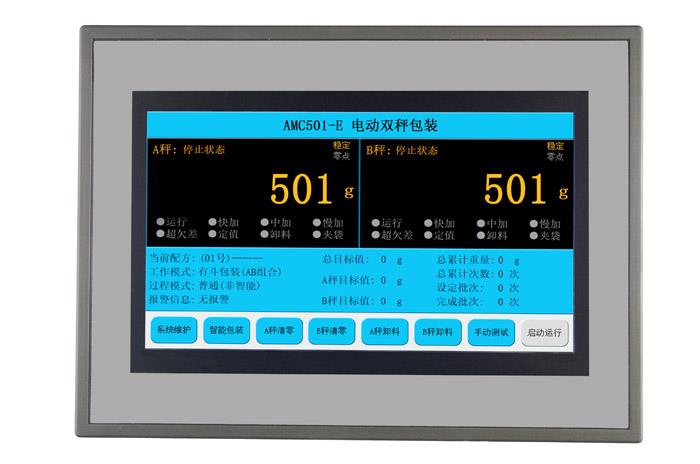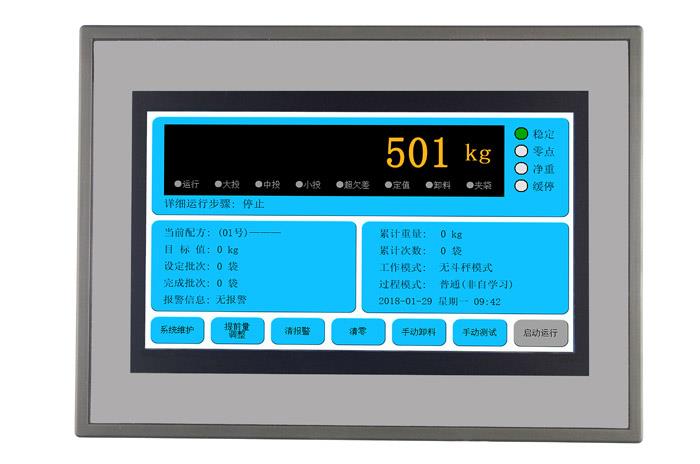
2019-11-15
Those factors affect the accuracy of the checkweigher instrument
Among the commonly used checkweigher instruments, the sensitivity is usually 2mV\/V. The sensitivity of double shear beam (bridge) structure, single shear beam (cantilever) structure, and parallel beam structure is usually 2mV\/V. The sensitivity of the type structure is usually 1mV\/V, and there is a small part of the cantilever beam structure, and the sensitivity of the S type is 3mV\/V. The dynamic electronic orbit scale has a large impact load during the weighing process, so the sensitivity index is 1mV\/ V, column checkweigher instrument products with a maximum weighing capacity of 20 tons; general static weighing instruments, such as truck scales, platform scales and other products, due to the relatively small impact load, use a checkweigher with a sensitivity of 2mV\/V Scale instruments; some hopper scales that use a lever system, or some hopper scales that are not easily affected by eccentric loads, and weighing instruments that weigh liquid substances, can use a checkweigher instrument with a sensitivity of 3mV\/V.

Some friends may want to say that in the R76-1 non-automatic weighing instrument is greater than the international recommendation (2006 version), when checking the compatibility of the non-automatic weighing instrument module, only a correction coefficient Q is given for weighing instruments of different structures, and there is no such thing at all. Considering the "sensitivity" of the checkweigher instrument, are you also making a fool of yourself here? In fact, for the same 2 checkweigher instruments with the same maximum capacity, if one has a sensitivity of 1mV\/V and the other has a sensitivity of 2mV\/V , then its usage is completely different. Because relatively speaking, the actual load capacity between the two is about half the difference. In other words, if the sensitivity of the two is the same, the sensitivity of the checkweigher instrument with a sensitivity of 1mV\/V is higher than The load capacity of a checkweigher instrument with a sensitivity of 2mV\/V is twice as large.
Many weighing instruments work under the action of dynamic loads, and few weighing instruments are statically weighed. Therefore, when choosing a checkweigher instrument, the impact of impact force must be considered. The design and selection of a checkweigher instrument is a There is a certain safety margin. However, some weighing instruments such as truck scales and rail scales are not only affected by impact loads, but also affected by alternating forces. The destructive force of these alternating forces on the checkweigher instrument, In some environments, the destructive force on some product structures is sometimes greater than the instantaneous force. The damage generated under such action is called "fatigue failure", which is completely different from the damage under static load. The stress at failure is lower than that of the material. The strength limit is even lower than the yield limit.
How fast the checkweigher instrument is installed is the premise to ensure that the boundary conditions in its use can be stable. If the fastening force is too large during assembly, it may break the fastening bolts; if the fastening force is small, it may be The installation requirements cannot be met. Whether the checkweigher instrument is installed on the carrier or on the basic structure, it must achieve that after the weight acts on the bearing point, its fixed point will not loosen, so the bolts selected for the fixed point Material, diameter and preload torque all have strict requirements.
For the checkweigher instrument of some structures, because the strain area is relatively close to the installation position, and the isolation area is not considered in the design, if the force used to fix the checkweigher instrument is not handled properly, the It will affect the normal output signal of the checkweigher instrument. For example, the eccentric load error of the "parallel beam" checkweigher instrument used by the electronic pricing scale is corrected after the installation, because the screw position of the fixed checkweigher instrument The sticking position of the strain gauge is on the same side, and the distance is relatively close. If it is designed at the two ends, the effect will be much better. The checkweigher instrument used in the crane scale introduced in the United States in the 1980s is designed between the fixed position and the strain area. The isolation groove is to reduce the influence of the installation torque on the measurement performance.

1 10, 2025

1 10, 2025